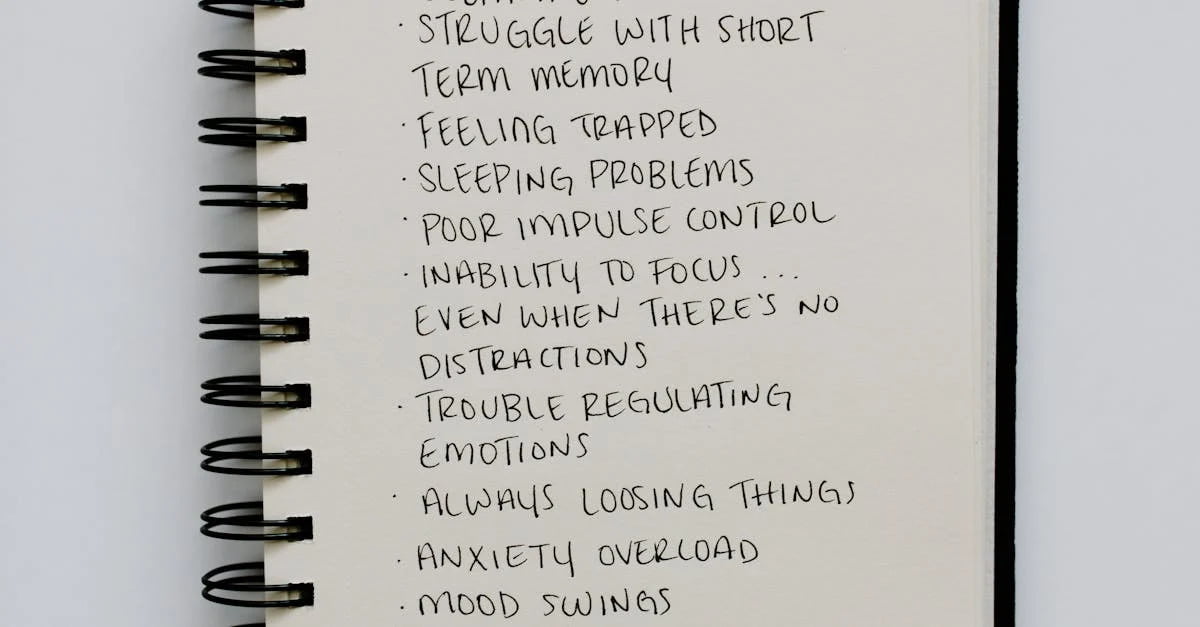Understanding and recognizing chronic bronchitis symptoms is critical for those affected and those caring for them. Chronic bronchitis, a relentless respiratory condition, significantly impacts the quality of life, primarily through persistent coughing and difficulty breathing. Our focus here is to delineate chronic bronchitis symptoms, offering insight into what those living with this condition, especially adults, might experience daily. It’s imperative to grasp the implications of chronic bronchitis symptoms and treatment options to manage this enduring ailment effectively.
In the forthcoming sections, we delve into the nuances of chronic bronchitis symptoms in adults and broaden our exploration to include COPD chronic bronchitis symptoms. We aim to provide a comprehensive understanding of early detection methods, diagnosis techniques, and effective strategies for symptom management. By equipping our readers with this knowledge, we empower them to identify the simple chronic bronchitis symptoms promptly and seek appropriate medical intervention. This information is pivotal for anyone seeking to mitigate the impacts of chronic bronchitis and enhance their overall well-being.
Chronic Bronchitis Explained
General Overview
Chronic bronchitis, a form of chronic obstructive pulmonary disease (COPD), is characterized by long-term inflammation and swelling of the bronchial tubes, which are responsible for carrying air to and from the air sacs in our lungs. This condition leads to increased mucus production and chronic coughing, often making breathing difficult. Unlike acute bronchitis, which can resolve quickly, chronic bronchitis develops over time and involves persistent symptoms that do not go away easily .
Root Causes and Contributing Factors
The primary cause of chronic bronchitis is prolonged exposure to irritants that damage the lungs and airways. Cigarette smoking is the most significant risk factor, contributing to the majority of cases. Other inhaled irritants, such as air pollution, chemical fumes, and dust from the environment or workplace, also play crucial roles . Additionally, genetic factors like alpha-1 antitrypsin deficiency can predispose individuals to chronic bronchitis, though this is less common . Chronic bronchitis tends to occur more frequently in individuals who have a history of respiratory diseases, are exposed to secondhand smoke, or live in high-pollution areas .
Identifying Symptoms Early
Common Early Symptoms
In the initial stages of chronic bronchitis, we might notice subtle symptoms that gradually become more apparent. Frequent coughing or a cough that produces a lot of mucus is a common early sign . We may also experience wheezing, a whistling or squeaky sound when breathing, and shortness of breath, especially during physical activities . Tightness in our chest can further indicate the onset of this condition .
Progression of Symptoms
As chronic bronchitis progresses, the symptoms intensify and become more disruptive. The mucus in our airways thickens, which can lead to severe coughing spells that are most pronounced in the morning and might temporarily improve after clearing the mucus . We might find ourselves experiencing a fast heart rate, exacerbated tiredness, and frequent respiratory infections like colds or the flu, which can significantly worsen our condition . In severe cases, chronic bronchitis can lead to weight loss, muscle weakness in the lower body, and swelling in the ankles, feet, or legs .
Seasonal Variations in Symptoms
Our symptoms may also show seasonal variations, often worsening during the winter months when humidity and temperatures drop . This seasonal fluctuation can exacerbate the challenges of managing chronic bronchitis, as colder air can make breathing even more difficult and trigger more severe coughing episodes .
By understanding these symptoms and their progression, we can seek timely medical advice and treatment, potentially preventing further deterioration of our lung function and improving our quality of life .
Diagnosis Techniques
Detailed Medical History
We start by taking a thorough medical history, which includes questions about symptoms such as coughing up mucus, difficulty breathing, and any exposure to lung irritants like cigarette smoke or pollutants. It’s essential to understand the duration and progression of symptoms, as chronic bronchitis often develops gradually over many years .
Physical Exam
During the physical examination, we look for signs indicative of chronic bronchitis or more severe COPD. Common findings might include cyanosis, typically noticeable on the lips and fingers, an elevated jugular venous pulse, and use of accessory respiratory muscles indicating respiratory distress. Listening to the lungs might reveal prolonged expiration, wheezing, and coarse crackles with inspiration . These signs help us assess the severity of the condition and differentiate between chronic bronchitis and other forms of COPD .
Vital Tests and Screenings
To further evaluate lung function and confirm a diagnosis, several tests are conducted:
- Spirometry: This is a primary test where you blow into a device that measures the volume and speed of air your lungs can expel, helping to assess whether your lung disease is restrictive or obstructive .
- Chest X-ray and CT Scan: These imaging tests provide detailed pictures of the lungs and help rule out other conditions while assessing the extent of lung damage .
- Pulse Oximetry and Arterial Blood Gas: These tests measure oxygen and carbon dioxide levels in the blood, offering insight into how well your lungs are transferring oxygen into your bloodstream and removing carbon dioxide .
- Additional Blood Tests: Sometimes, specific tests like those checking for alpha-1 antitrypsin deficiency are necessary, especially if there’s a family history of COPD or symptoms appear at a young age .
By combining these diagnostic tools with a detailed medical history and physical examination, we can effectively diagnose chronic bronchitis and its severity, guiding appropriate treatment strategies.
Strategies for Symptom Management
Medical Interventions
When managing chronic bronchitis symptoms, medical interventions play a crucial role. We often use bronchodilator medications, either inhaled as aerosol sprays or taken orally, to help relieve symptoms by relaxing and opening the air passages in our lungs. In some cases, steroids may also be prescribed and inhaled as an aerosol spray to help reduce inflammation. However, it’s important to be aware of potential side effects such as weakened bones and high blood pressure, which is why I always discuss these with my doctor before starting treatment .
Antibiotics are another key component of our treatment arsenal, especially useful in fighting respiratory infections that are common in people with chronic bronchitis . For ongoing protection against infections, we make sure to receive a flu shot annually and a pneumonia shot every five to seven years .
In more advanced stages, oxygen therapy might become necessary as it becomes increasingly difficult to breathe on our own. This therapy can be administered using various devices, some of which are suitable for use at home . For those with severe symptoms, lung volume reduction surgery or pulmonary rehabilitation might be recommended. Pulmonary rehabilitation is particularly beneficial as it includes education, nutrition counseling, and special breathing techniques, which altogether enhance our quality of life .
Supportive Lifestyle Changes and Home Care
Alongside medical treatments, making certain lifestyle changes can significantly aid in managing chronic bronchitis. Quitting smoking is perhaps the most impactful step we can take, as it directly contributes to alleviating the condition . Avoiding secondhand smoke and other lung irritants is also crucial to prevent exacerbation of symptoms.
We also focus on maintaining a healthy diet and engaging in regular physical activity. Physical activity, in particular, is essential as it strengthens the muscles that help us breathe and improves overall wellness . Techniques such as pursed-lip breathing are beneficial too, as they help slow down breathing and may facilitate better mucus clearance .
Incorporating natural remedies and home care practices also plays a supportive role. We often use humidifiers to maintain moisture in the air, which helps in loosening the mucus. Gargling saltwater and using saline nasal sprays are simple yet effective methods to alleviate throat irritation and congestion .
By combining these medical interventions with supportive lifestyle changes, we can effectively manage the symptoms of chronic bronchitis and improve our overall health and well-being.
Conclusion
Through this exploration of chronic bronchitis, we’ve uncovered the crucial aspects of identifying, diagnosing, and managing this persistent respiratory condition. The detailed breakdown of symptoms, from their early inception to more severe manifestations, alongside the pivotal diagnostic techniques, equips individuals and caregivers with the insights necessary for timely intervention. Moreover, the emphasis on both medical treatments and supportive lifestyle alterations provides a holistic approach to managing chronic bronitis, highlighting the importance of a multi-faceted strategy in improving patient outcomes and quality of life.
Understanding the implications of chronic bronchitis not only serves those directly affected by the condition but also fosters a broader awareness of respiratory health. By prioritizing early detection and comprehensive management strategies, including quitting smoking and adopting healthier lifestyle habits, there’s a clear pathway toward mitigating the impacts of chronic bronchitis. The collective effort in recognizing and responding to this condition can significantly contribute to enhanced wellbeing and preventions of complications, underscoring the importance of continued research and patient education in the realm of respiratory health.
FAQs
1. How is chronic bronchitis diagnosed?
Chronic bronchitis is diagnosed using several methods:
- Pulmonary function tests: These assess how well your lungs can move air in and out.
- Arterial blood gas: A test that measures oxygen and carbon dioxide levels in your blood.
- Pulse oximetry: This checks the oxygen saturation in your blood.
- Chest X-ray: Helps visualize the lungs and check for any abnormalities.
- CT scan: Provides a detailed image of the lungs.




